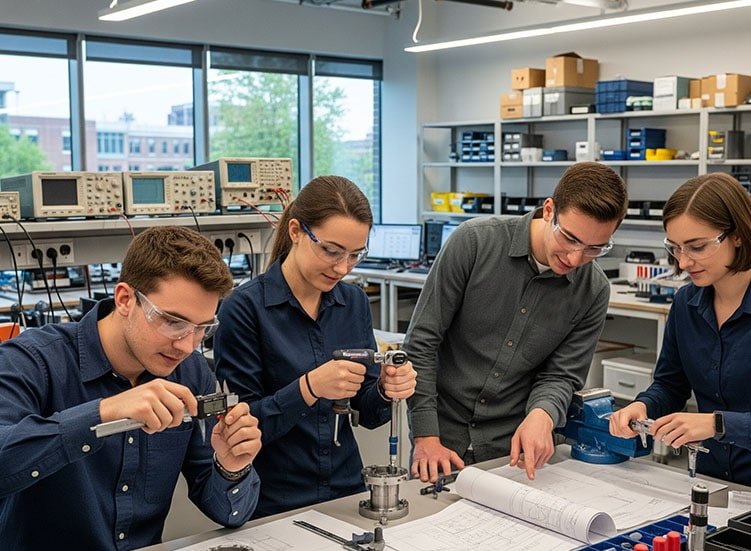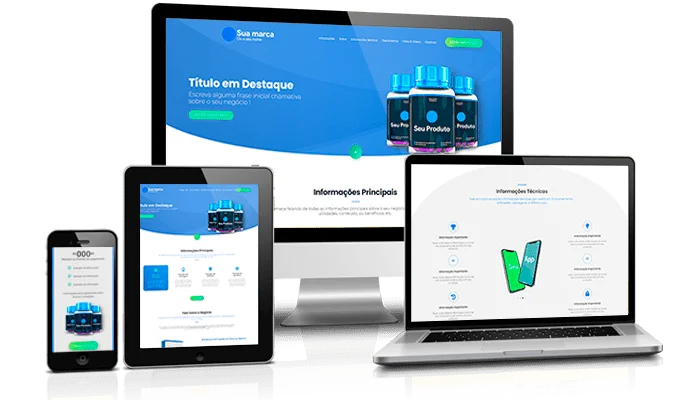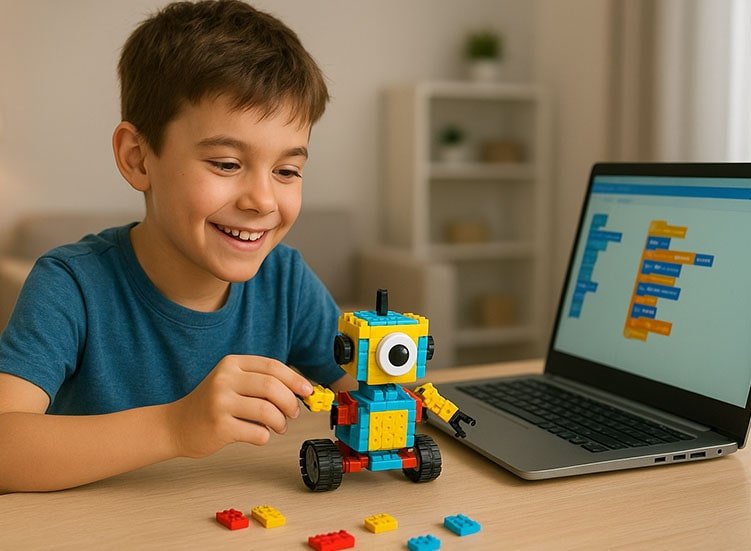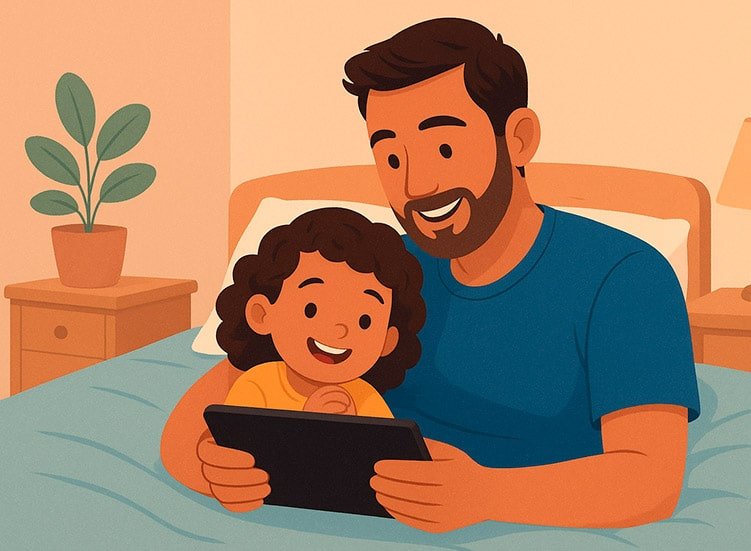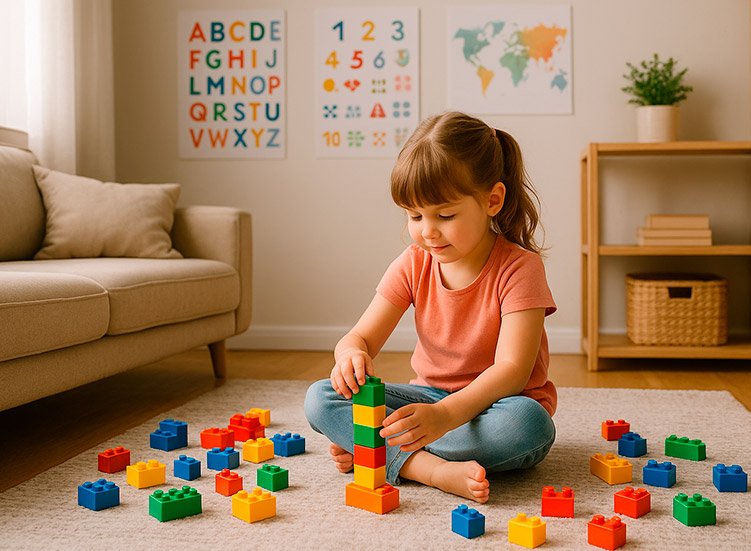How many creative geniuses are stuck in classrooms focused solely on memorization? For decades, we’ve been conditioned to believe that the path to professional success is linear: good grades, a university degree, and then a stable job.
This model worked well in the 20th century, but the 21st-century job market demands more than just certificates hanging on the wall: it requires practical skills in education, capable of transforming knowledge into action, innovation, and real results.
Today, companies seek professionals who can solve problems, innovate, and get hands-on. While a degree remains important, it has lost its status as a “guaranteed passport to success.” What truly sets young people apart is the ability to apply knowledge practically, in real and challenging contexts.
This movement is closely linked to the rise of the maker culture, STEAM education, and project-based learning. In this article, you’ll discover how practical skills in education are shaping the professional future of young people and why they are the true competitive advantage for standing out in a constantly evolving market.
A Degree Isn’t Enough Anymore: Why Practical Skills in Education Are Essential?
The Gap Between Theory and Practice
Many young people graduate with a vast theoretical repertoire but without the preparation to apply this knowledge in the real world. This gap between academia and the job market is one of the main dilemmas of current education.
Companies complain that recent graduates master concepts but fail to perform practical tasks, adapt to changes, and solve problems creatively. This happens because the pace of technological transformation outstrips the ability of university curricula to update themselves.
While new tools, programming languages, and management methodologies emerge each year, many courses still follow rigid models disconnected from reality.
The Value of Technical and Socio-Emotional Skills
In addition to technical skills (hard skills), there’s a growing demand for socio-emotional skills (soft skills), such as:
- Critical Thinking: Questioning, analyzing, and proposing innovative solutions.
- Collaboration: Working effectively in teams, whether in person or remotely.
- Creativity: Finding new ways to solve old problems.
- Resilience: Dealing with failures and transforming them into learning opportunities.
- Learning to Learn: Constantly updating in a world of rapid change.
In today’s job market, a degree is just the starting point. What truly opens doors is proven ability to deliver practical results.
The Revolution of Practical Skills in Education with STEAM and Projects
STEAM: When Knowledge Gains Purpose
The integration of Science, Technology, Engineering, Arts, and Mathematics (STEAM) is revolutionizing how we teach and learn.
Unlike fragmented learning, where each subject is studied in isolation, STEAM connects knowledge to solve real-world problems.
Practical Example: Creating a smart irrigation system for a school garden. The project integrates:
- Biology (plant growth).
- Mathematics (optimal water quantity).
- Technology (humidity sensors).
- Engineering (system assembly).
- Arts (creative design of the structure).
This approach shows that knowledge shouldn’t be memorized but applied interdisciplinarily, giving students the feeling they are building something useful for the world.
Project-Based Learning (PBL): Theory That Transforms into Practice
Project-Based Learning (PBL) is one of the most effective ways to develop practical skills in education.
Practical Example: Students challenged to build a robot that avoids obstacles need to:
- Research physics and electronics concepts.
- Program sensors and actuators.
- Work collaboratively to integrate the parts.
- Test, fail, correct, and try again.
This process teaches much more than theoretical exams because it transforms knowledge into concrete experience. It also strengthens engagement, as students perceive purpose in what they are building.
Practical Skills in Education: The Role of Tools and Precision
Learning by Doing
The act of building, testing, and refining is one of the most powerful processes for solidifying learning. Each mistake becomes a silent teacher, revealing details that theory would never show.
Practical Example: Designing a solar-powered toy car. For it to work, the student needs to:
- Understand concepts of energy and motion.
- Measure and adjust parts with precision.
- Learn that the difference between success and failure can be a matter of millimeters.
Tools as Extensions of Thought
Instruments like calipers, multimeters, and oscilloscopes cease to be mere objects and become extensions of the human mind. They develop patience, attention to detail, and a sense of responsibility.
It is at this point that abstract mathematics comes alive: it transforms from a set of formulas into something tangible, applicable, and necessary.
Practical Skills in Education: Building People Beyond Diplomas
Much More Than Techniques: Building Character
By participating in practical projects, students not only learn technical content but also develop life skills.
Among the most important:
- Resilience: Dealing with frustration and persisting through failures.
- Problem-Solving: Breaking down big challenges into smaller, solvable steps.
- Collaboration: Dividing tasks, listening to different ideas, and integrating contributions.
- Autonomy: Seeking additional information and applying new knowledge to complete projects.
These competencies are universal. They are valuable whether you dream of becoming an engineer, an entrepreneur, or working in creative fields.
The Future of Practical Skills in Education
The future of education lies not in accumulating certificates but in forming individuals capable of thinking, creating, and transforming ideas into solutions. A degree will still hold value, but it must be complemented by a rich portfolio of practical experiences.
To prepare young people for a dynamic and unpredictable market, we need to encourage:
- The maker culture.
- STEAM education.
- Project-based learning.
- Valuing experimentation and learning from mistakes as part of the process.
These experiences shape future builders, individuals who go beyond theory and create real impact in the world.
Global Examples of Practical Skills in Education
Finland: A Benchmark in Applied Learning
Finland is globally recognized for its innovative educational system. Here, students are encouraged from an early age to apply knowledge in real-world situations. Interdisciplinary projects are part of the routine, and assessment isn’t limited to written tests.
A student might learn mathematics by building a bridge prototype, combining calculations of weight and resistance. This model demonstrates how practical skills in education make learning more engaging and lasting.
United States: STEAM as a National Strategy
In the United States, schools and universities are integrating STEAM as a strategy to prepare young people for future careers. Robotics labs, 3D printers, and project-based classes are increasingly common.
A report from the U.S. Department of Education indicates that students involved in practical projects have higher knowledge retention (about 30% higher) compared to traditional instruction.
Japan: Discipline and Precision in Learning
Japan combines technology and discipline to develop practical competencies. In many schools, students learn programming from an early age and have direct contact with engineering tools. Furthermore, the culture of continuous improvement (kaizen) is present, encouraging learning from mistakes.
This model reinforces how practical skills in education are not limited to technical content but also extend to fostering a resilient and innovative mindset.
Job Market Data: Why Practical Skills in Education Are So Decisive?
Reports from major global organizations show the increasing value placed on practical skills:
- According to the World Economic Forum, by 2030, over 50% of professionals will need reskilling in applied skills, particularly related to problem-solving and technology use.
- McKinsey & Company highlights that companies prioritize candidates capable of learning quickly and applying knowledge in complex situations.
- A survey by LinkedIn identified critical thinking, collaboration, and creativity as among the most in-demand skills in recent hiring.
This data confirms that, more than degrees, the market seeks evidence that a professional is capable of making things happen.
Traditional Schools vs. Innovative Schools: The Impact of Practical Skills in Education
| Traditional Model | Innovative Model (Focus on Practical Skills) |
|---|---|
| Expository classes centered on the teacher. | Project-based learning with students as protagonists. |
| Assessments through written tests and exams. | Assessments via portfolios, prototypes, and presentations. |
| Fragmented content by discipline. | Integration of knowledge areas focusing on real-world problems. |
| Emphasis on memorization. | Emphasis on experimentation, failure, and iteration. |
| Degree as the primary goal. | Portfolio of practical experiences as a competitive differentiator. |
This comparison highlights how practical education prepares students for the challenges of the 21st century.
❓ (FAQ) Frequently Asked Questions about Practical Skills in Education
These are competencies that enable students to apply knowledge in real-world situations, such as problem-solving, creating prototypes, teamwork, and developing projects with practical impact.
Theoretical skills focus on concepts, memorization, and formulas, while practical skills are linked to execution, application, and transforming knowledge into concrete results.
Through methodologies like STEAM, Project-Based Learning (PBL), the maker culture, the use of laboratories, and by encouraging experimentation and innovation.
Because they demonstrate a professional’s ability to generate real results, solve complex problems, and adapt to new situations – essential competencies in a constantly evolving world.
Conclusion: A New Perspective on Practical Skills in Education
The future of education goes far beyond diplomas. The real differentiator lies in fostering individuals capable of transforming knowledge into real-world impact. By adopting methodologies such as STEAM, the maker culture, and project-based learning, institutions not only impart knowledge but also cultivate creative, resilient, and adaptable minds.
Investing in practical skills in education means investing in young people who will be the builders of the future, prepared not only to secure jobs but also to create solutions that will transform society.
Click here for more content on Children & Education.

